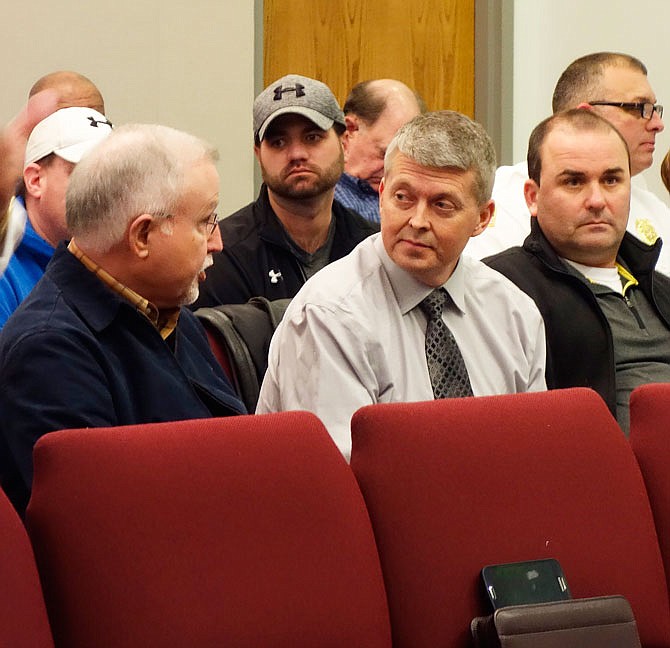MOBERLY - The city of Moberly has required home safety inspections - for both owner-occupied and rental residences - since 1998. Now they are just a fact of life, Fire Inspector Seth Truesdall said Wednesday.
"When it first started, there were a lot of (landlord) complaints," he said. "It went to court and it was fought, but the city won every court case on it."
City workers used to perform the inspections, but in 2007, the Moberly Fire Department took them over. Truesdall, who started as inspector in early 2017, assumed his job from an inspector who helped get the program started.
Here's how Moberly, a city of just less than 14,000 residents, handles inspections.
"We do an inspection annually - well, it's kind of complicated," Truesdall said. "An inspection is good for a year, or as long as the person stays in that house."
Inspections cost $45. The time to do an inspection depends on the age and condition of the residence, but Truesdall said a thorough inspection generally takes 30 minutes to an hour.
"The biggest problem we have is smoke detector batteries," he said. "The batteries will be dead or they won't even have batteries in them."
He said he advises landlords or homeowners to bring extra batteries to the inspection.
"I also see a lot of furnace problems," Truesdall added. "We inspect furnaces and water heaters and make sure they were installed properly."
Windows used to be a problem, but with 20 years of home inspections now having been performed, many problems such as properly sized windows have been fixed. To qualify as an "egress" window, he said, it has to have a 5.7-square-foot opening.
"Houses built after 1980, you don't have to worry about that," he said, adding that's because of updated building codes.
While insurance companies inspect residences annually, those inspectors are looking for different things than inspectors looking for safety issues, he added.
"Insurance inspections are not the same," Truesdall said. "They look at different things: the gutters, the age of the roof. They aren't as safety oriented."
He said his list comes from a 2012 Property Maintenance Code, a model code regulating the minimum maintenance requirements for existing buildings.
"For the most part, that's the focus - making sure the place where people are living is safe," Truesdall added.
He said homeowners including landlords are more accepting of home inspections.
"They've calmed down quite a bit," he said. "It's difficult when you get into people's pocketbooks, but it just fixes the problem of slums and substandard housing in town."
Making certain housing is safe has nothing to do with the size of the community, he confirmed.
"Last year, I entered 724 inspections into my computer, but I failed 163," Truesdall said. "Twenty two and a half percent failed on the first (inspection). That's really not bad. A lot were batteries in smoke detectors and carbon monoxide detectors in homes with attached garages or gas burning appliances."
Does Truesdall feel these home inspections have saved lives?
"Absolutely. Absolutely," he said. "By listening to the older firefighters here, those who have been here for years, they swear the number of fires has been reduced."

